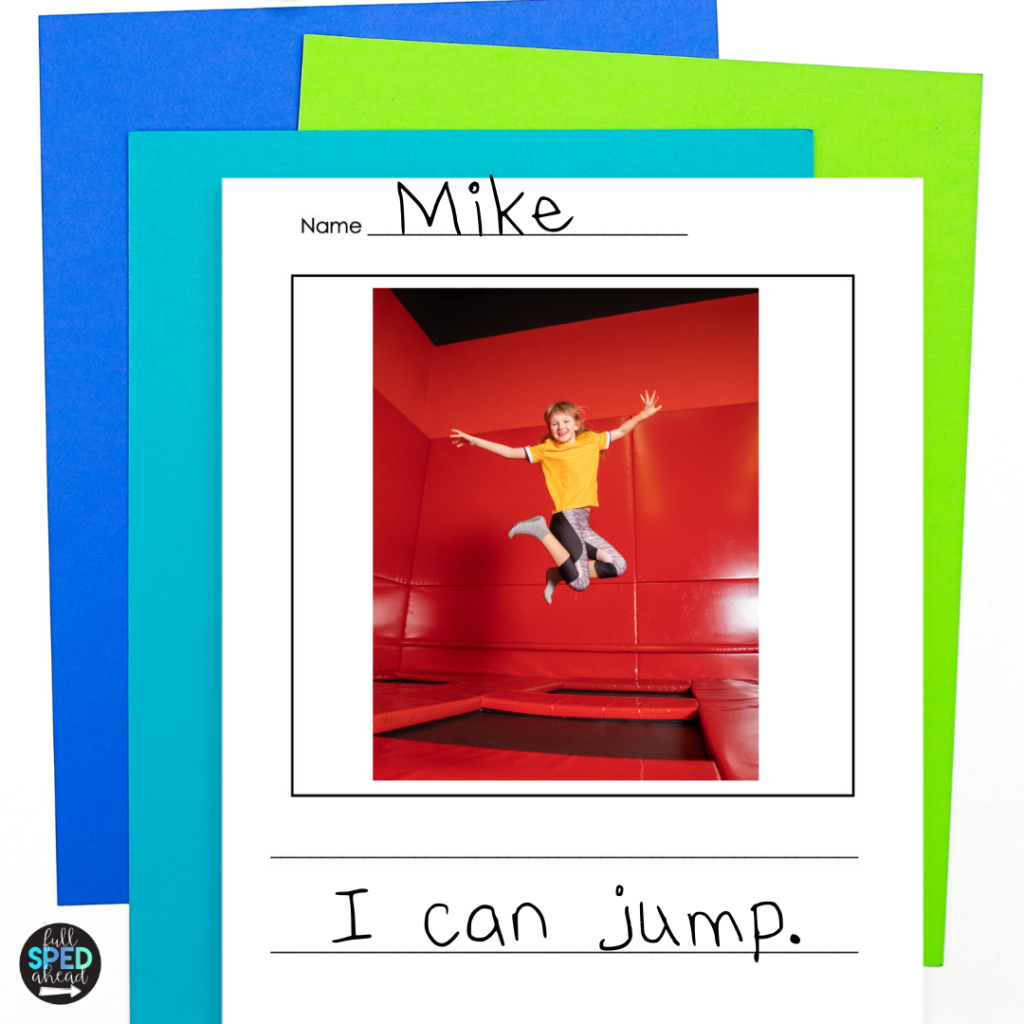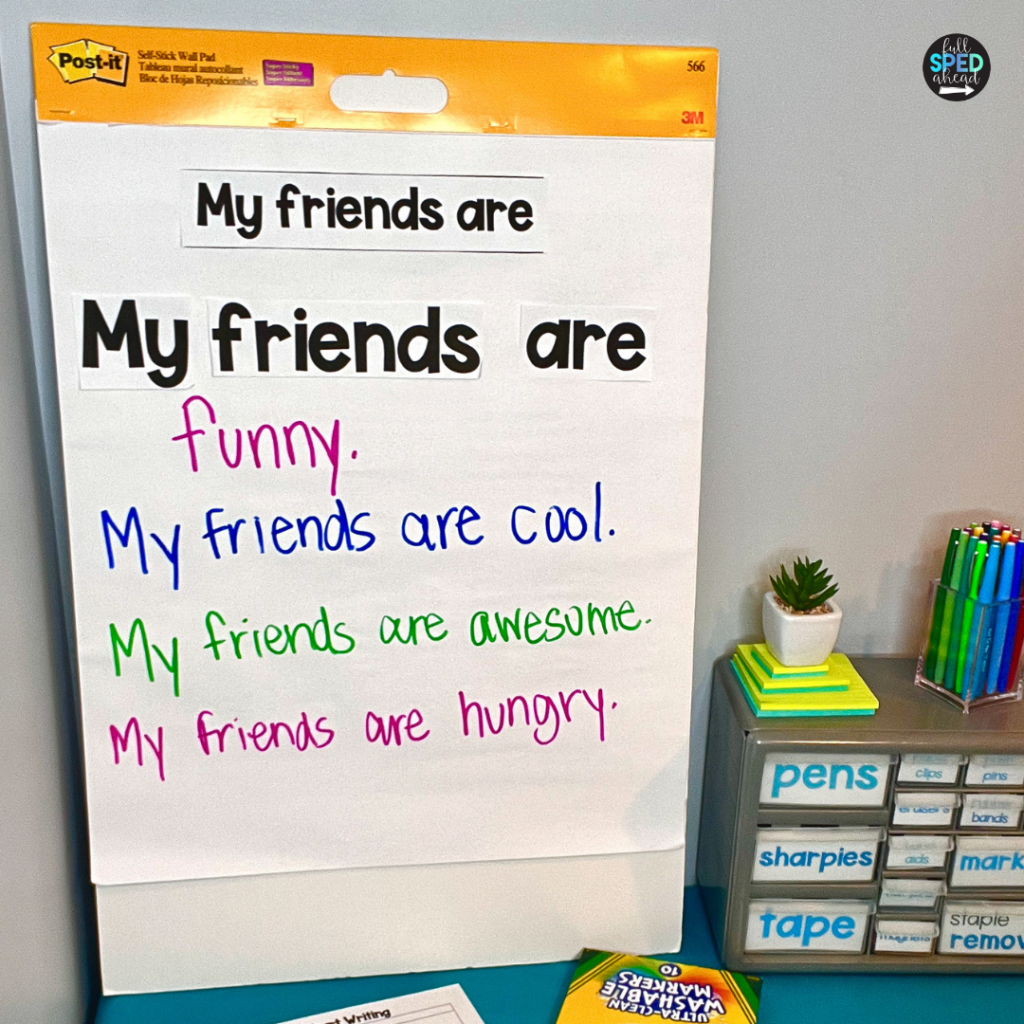In this blog post, we’ll explore how predictable chart writing can help you unlock literacy skills in your classroom and why it’s a must-have strategy for special education teachers. If you’re ready to get started, check out my Predictable Chart Writing Curriculum for Special Education for a comprehensive, yearlong resource designed specifically for diverse learners.
Writing is an essential skill for all students, but for special education teachers, bringing writing into the classroom can feel overwhelming. Students in self-contained classrooms often face unique challenges with literacy and writing skills, making it difficult to know where to begin. That’s where predictable chart writing curriculum comes in. This structured, engaging strategy offers a pathway to teaching writing in a way that is accessible, meaningful, and empowering for special education students.
Click here to get 4 weeks of predictable chart writing for free!
Predictable chart writing curriculum is a literacy strategy that involves creating repetitive, patterned sentences based on a single theme or sentence starter. This approach helps students practice key skills like sentence structure, vocabulary, and communication in a way that feels manageable and fun. For example, you might start with a sentence like, “I like…” and then have each student complete the sentence with their own word or phrase (“I like pizza” or “I like dogs”).
By using repetition and predictable patterns, students gain confidence and familiarity with writing concepts. Predictable chart writing is particularly effective in special education classrooms because it provides the scaffolding students need to be successful, regardless of their current writing abilities.

Writing often takes a backseat in special education classrooms due to the unique challenges students face. However, writing is a critical skill that impacts communication, self-expression, and future independence. Here’s why writing matters:
Predictable chart writing curriculum makes writing accessible and engaging, giving students the opportunity to build these essential skills.
1. Supports Emerging Writers
For students who struggle with writing, getting started can be the hardest part. Predictable chart writing eliminates that barrier by providing a structure to follow. The repetition and simplicity of the sentence starters allow emerging writers to focus on contributing their ideas without worrying about spelling, grammar, or sentence construction.
2. Incorporates AAC and Nonverbal Communication
Predictable chart writing is highly adaptable for students who use Augmentative and Alternative Communication (AAC) devices. Nonverbal students can select words or phrases from their devices to complete the sentences, making writing accessible for all learners. This approach ensures that every student has a voice in the classroom.
3. Promotes Peer Collaboration
As students take turns completing the chart, they have the opportunity to learn from one another. Listening to their peers’ sentences exposes them to new vocabulary and ideas while fostering a sense of community in the classroom.
4. Teaches Foundational Writing Skills
Through predictable chart writing, students practice:
These foundational skills lay the groundwork for more advanced literacy development.
Getting started with predictable chart writing is simple, and it can easily be adapted to meet the needs of your students. Here are a few steps to help you implement this strategy in your classroom:
The Predictable Chart Writing Curriculum for Special Education is designed to make implementing this strategy easier than ever. This yearlong resource provides:

With this curriculum, you’ll have everything you need to bring writing into your classroom in an accessible and impactful way.
Click here to get 4 weeks of predictable chart writing for free!
Predictable chart writing is a powerful tool for unlocking literacy skills in special education students. By providing structure, repetition, and opportunities for collaboration, this strategy makes writing achievable for all learners. Whether you’re working with emerging writers or students using AAC devices, predictable chart writing can help build confidence, communication skills, and a love for writing.
Ready to transform writing in your classroom? Check out the Predictable Chart Writing Curriculum for Special Education and get started today!
Read more about PCW:
What are you looking for?
COPYRIGHT © 2025 Full SPED Ahead